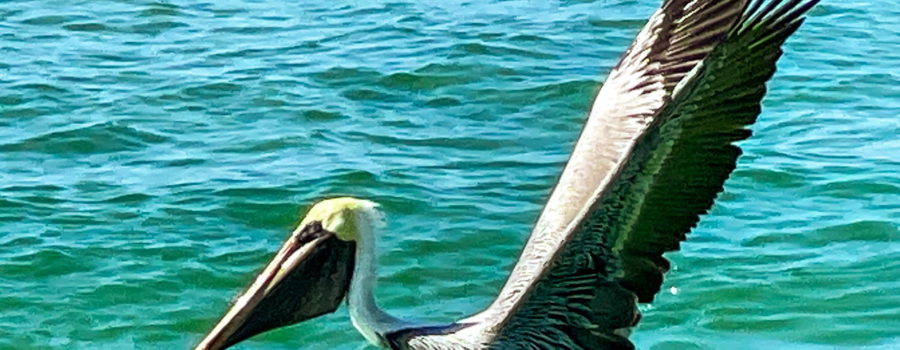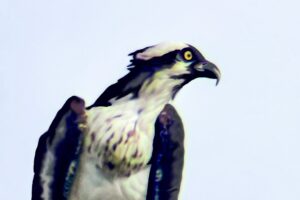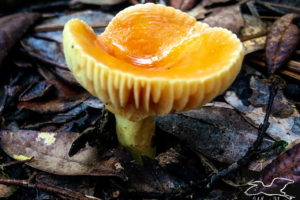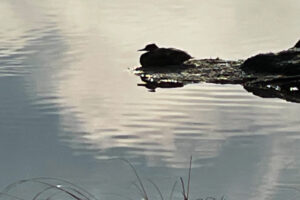The Brown Pelican is Beautiful and an Amazing Fisherman

Last weekend I took a trip down to St. Petersburg, Florida to visit with one of my college friends. We went to college in south St. Pete, but I hadn’t been back in many, many years, so it was definitely interesting to see how much of the city had changed and grown. Now, I love where I live, but one thing I do really miss is the beach. When we were in college, we went to the beach often, and it was always one of my favorite places to go hang out, study, or play. So of course one of the things we had to do while I was there was make a trip out to the beach. We had a perfect morning for it, and while we were out there I got photos of several of the shore birds that I’m not likely to find around my home in the sandhills.

Among the birds I was able to photograph was the brown pelican (Pelicanus occidentalis). There were actually quite a few of them out on a rock jetty that we walked to, but the one I enjoyed watching the most was one that was foraging not too far offshore. There are eight different species of pelicans in the world, but only the brown pelican and the Peruvian pelican feed by diving into the water after fish, and even the Peruvian pelican doesn’t dive from such great heights as the brown pelican. This particular bird that we were watching made several successful dives over the course of 15 to 20 minutes. After each dive, the bird would tilt it’s beak to drain the water from the pouch before throwing it’s head back and swallowing the captured fish still inside. At one point I tried to photograph him in a dive, but only ended up with a shot of splashing water! After eating the bird would float on the water for a bit and then fly up and around to make another dive.

The brown pelican is one of the best known success stories in early conservation efforts. In the 1940’s through the 1960’s it’s populations dropped severely due to hunting pressures and the use of DDT and similar pesticides. In fact, the brown pelican was pronounced extinct in Louisiana in 1963, and was only reestablished by a reintroduction program run by the Louisiana Department of Wildlife and Fisheries between 1968 and 1980. From 1970 through 2009, the brown pelican was listed as an endangered species, and is still classified as endangered along parts of it’s Pacific coastal range and in Louisiana and Texas. Particularly on the west coast, the brown pelican is considered an important indicator species for the health of the Pacific sardine and other fish that are common targets of the fishing industry.

The brown pelican is an almost exclusively coastal bird, being found mostly in a salt water habitat such as salt inlets, mangrove swamps, and beaches. Occasionally strays will be found further inland on freshwater lakes, but this is rare. Brown pelicans can be found along the coasts of much of the western hemisphere. On the west coast it can be found from British Columbia through northern Chile as well as on the Galápagos Islands. On the east coast brown pelicans range from New Jersey south to the mouth of the Amazon River. There are five subspecies of the brown pelican that are based on their ranges. The one in these photos is Pelicanus occidentalis carolinensis which is found from New Jersey and New York through Venezuela. These birds feed mainly on fish including pinfish, sheepshead, mullet, sardines, and anchovies. Occasionally they will eat crustaceans, small reptiles and amphibians, and the eggs and nestlings of other birds. Other than man, adult pelicans have few natural predators, but they will occasionally be taken by bald eagles, South American sea lions, and large sharks.
Needless to say, I had a wonderful time last weekend visiting with friends, reacquainting my self with St. Petersburg, and going out to the beach. I hope to do it again fairly soon. Maybe next time I can manage to catch a shot of one of these magnificent birds in it’s headlong dive, rather than after it’s already under the water! Until then, I will have to be content with the images I did get, and the enjoyment of watching the brown pelican doing it’s thing.
Subscribe below to get daily episodes delivered directly to your inbox and be the first to get new news on the Florida wildlife front!





Recent Comments